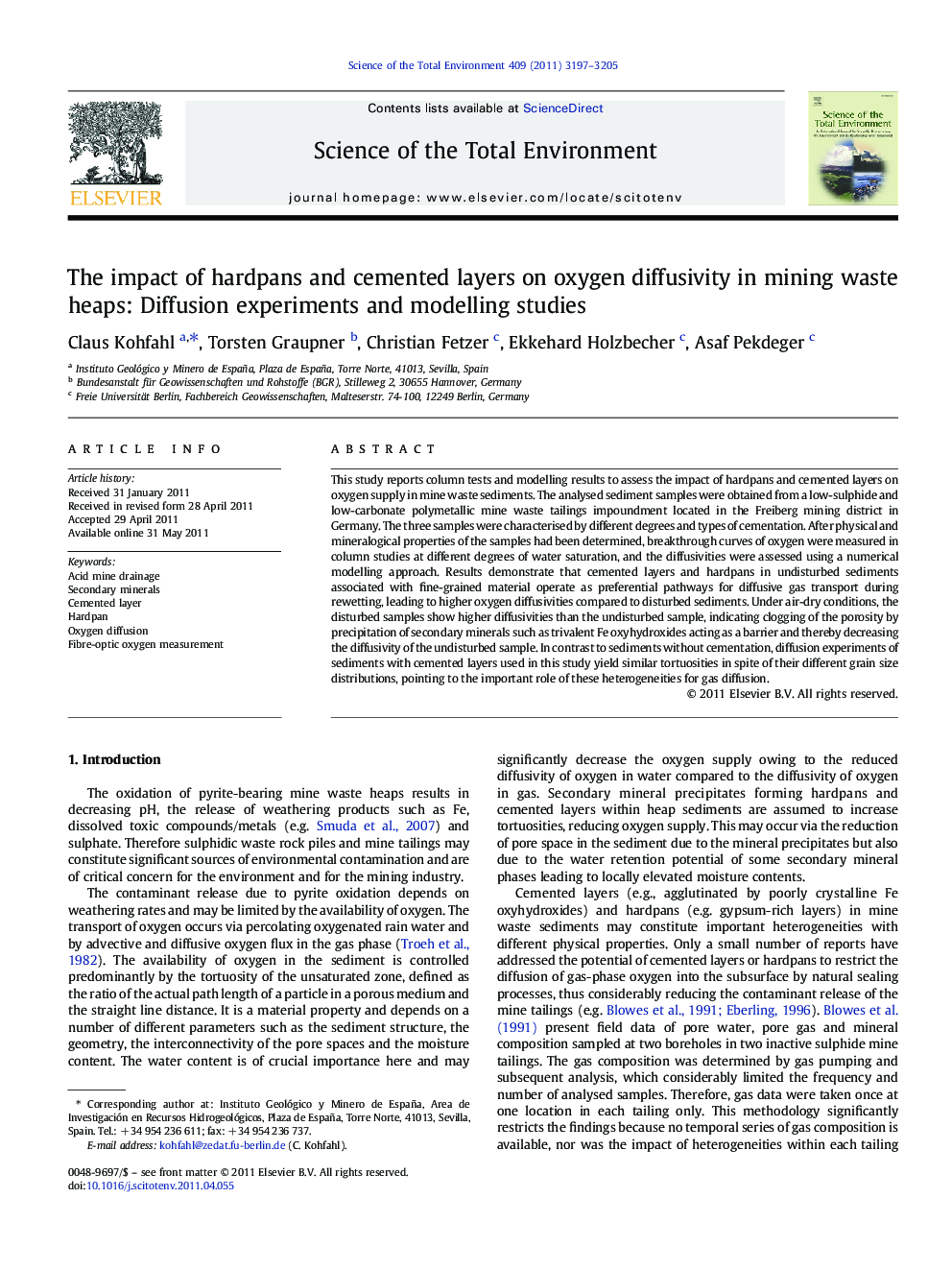| Article ID | Journal | Published Year | Pages | File Type |
|---|---|---|---|---|
| 4429999 | Science of The Total Environment | 2011 | 9 Pages |
This study reports column tests and modelling results to assess the impact of hardpans and cemented layers on oxygen supply in mine waste sediments. The analysed sediment samples were obtained from a low-sulphide and low-carbonate polymetallic mine waste tailings impoundment located in the Freiberg mining district in Germany. The three samples were characterised by different degrees and types of cementation. After physical and mineralogical properties of the samples had been determined, breakthrough curves of oxygen were measured in column studies at different degrees of water saturation, and the diffusivities were assessed using a numerical modelling approach. Results demonstrate that cemented layers and hardpans in undisturbed sediments associated with fine-grained material operate as preferential pathways for diffusive gas transport during rewetting, leading to higher oxygen diffusivities compared to disturbed sediments. Under air-dry conditions, the disturbed samples show higher diffusivities than the undisturbed sample, indicating clogging of the porosity by precipitation of secondary minerals such as trivalent Fe oxyhydroxides acting as a barrier and thereby decreasing the diffusivity of the undisturbed sample. In contrast to sediments without cementation, diffusion experiments of sediments with cemented layers used in this study yield similar tortuosities in spite of their different grain size distributions, pointing to the important role of these heterogeneities for gas diffusion.
Research Highlights► Self sealing effect of secondary mineral precipitates on oxygen diffusion reducing contaminant release. ► The effect of heterogeneities due to secondary mineral precipitation on diffusivity during rewetting. ► Application of optical oxygen sensors at contaminated mine sites.
